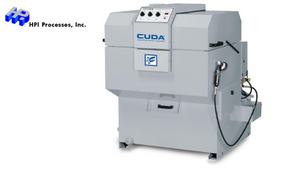Parts washers are critical equipment for any automotive manufacturing unit as they help clean machined parts, keep them free of dust, dirt, grime, and other contaminants. Parts cleaning in the automotive sector is challenging without a parts washer equipment. Parts washers use an approved cleaning solution and mixes it with the required amount of water for cleaning machined parts. Today, different parts washers are available; each type has its own features and benefits. When considering the application requirement, you should select the appropriate parts washer that will meet your cleaning needs. Even with the availability of several options, choosing the best part washer can be difficult as it involves many considerations. Most buyers gravitate towards heavy-duty parts washers for extra benefits. When considering purchasing a parts washer, you should account for the impact of the machine size which could affect cleaning performance, such as flow and water pressure. This post is aimed to give you an idea of how oversized machine size affects cleaning performance.
Impact of Oversized Parts Washers, Flow, and Pressure in Cleaning Performance
The performance of parts washers can be evaluated by taking the surface area of the largest part, which fits inside the cabinet, and dividing it by the pumps’ horsepower rating. This way, you can easily calculate the cleaning power of parts washers. However, it overlooks several points that negatively impact the washers’ performance. First, let’s look at what happens when the parts washer machine is oversized.

Most parts washers use flat V-jet nozzles to form a thin, oval, inverted V pattern. This pattern is commonly referred to as a tapered spray. The spray density becomes gradually smaller towards the outside of the V pattern. When the distance between the nozzles to the workpiece increases, the following two things happens:
- The narrow pattern enlarges. This results in increased surface area coverage.
- The velocity of the spray jet decreases, ultimately decreasing spray impact and cleaning performance.
The loss of impact force can be compensated by understanding the relationship between the pump’s horsepower, pressure, and flow rate. The following section describes the same.
Most parts washers used today have centrifugal pumps. The horsepower of these pumps is directly proportional to the volume and pressure delivered. Thus, the increased pressure demands more horsepower to maintain a given flow rate. You can increase the pressure by using the same horsepower. However, this will decrease the flow rate, and there are chances that the cleaning solution may come in contact with the parts. In parts washers design, the solution to this problem is to lower the total number of nozzles and/or adjust the size of nozzles to generate the required pressure.
As mentioned earlier, the distance between the nozzle tips and the part increases, and velocity decreases. This reduces the spray impact. What this means, is the effect gained from the increased pressure diminishes with oversized parts washers. The best remedy to this scenario is to increase the horsepower of pumps with more pressure and flow.
Conversely, large pumps for washers cost more to operate and purchase. An oversized industrial parts washer is expensive, and adding large pumps makes it unaffordable. While selecting parts washers, consider the interdependence between size, pressure, and flow.
Are you in search of automotive parts washers for your application? If yes, then you can consider a trusted manufacturer like HPI Processes Inc. With decades of market presence and expertise in parts washer sales and maintenance, HPI provides superior quality and performance-driven parts washers. Contact us for a quote on a parts washer today.
